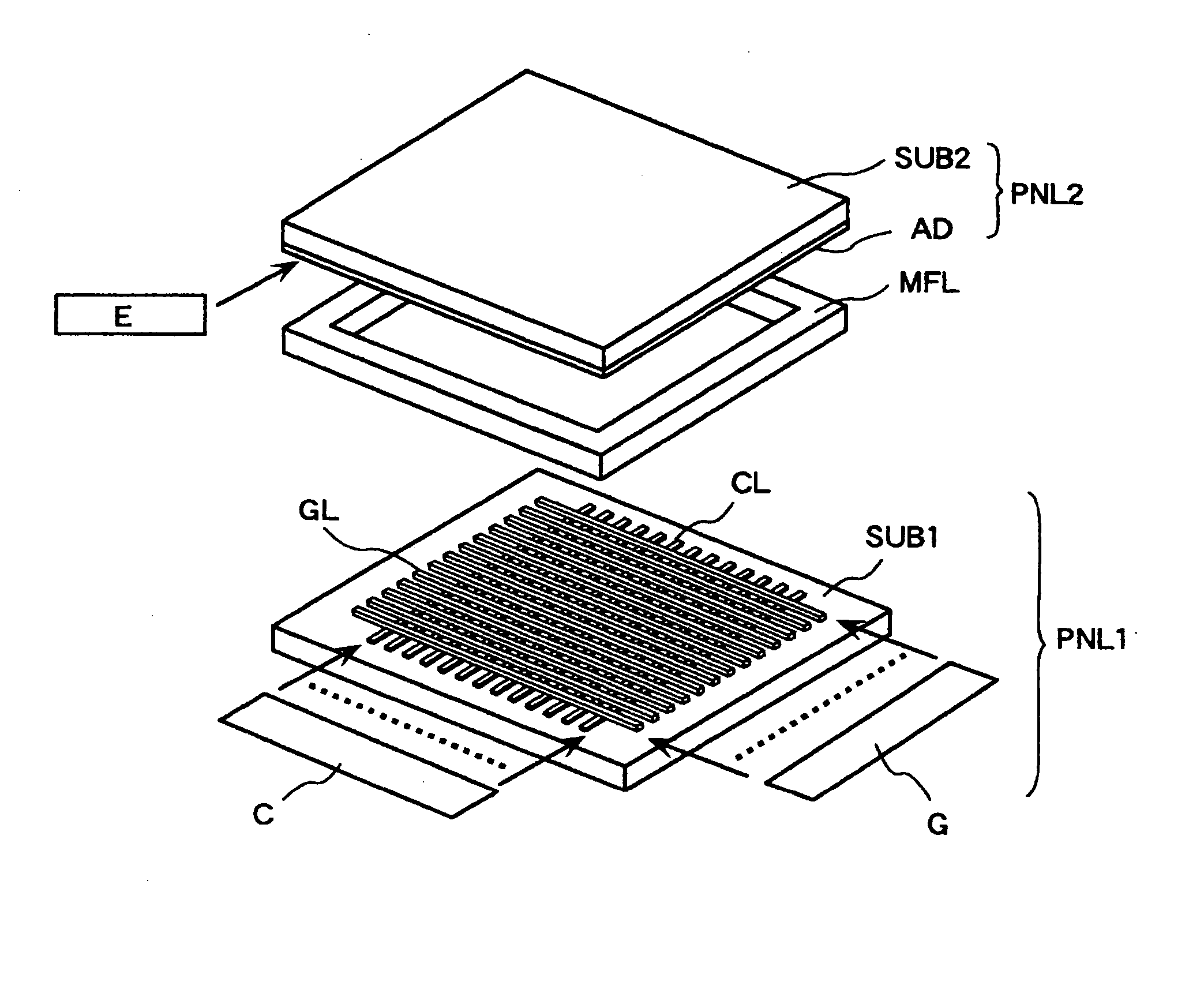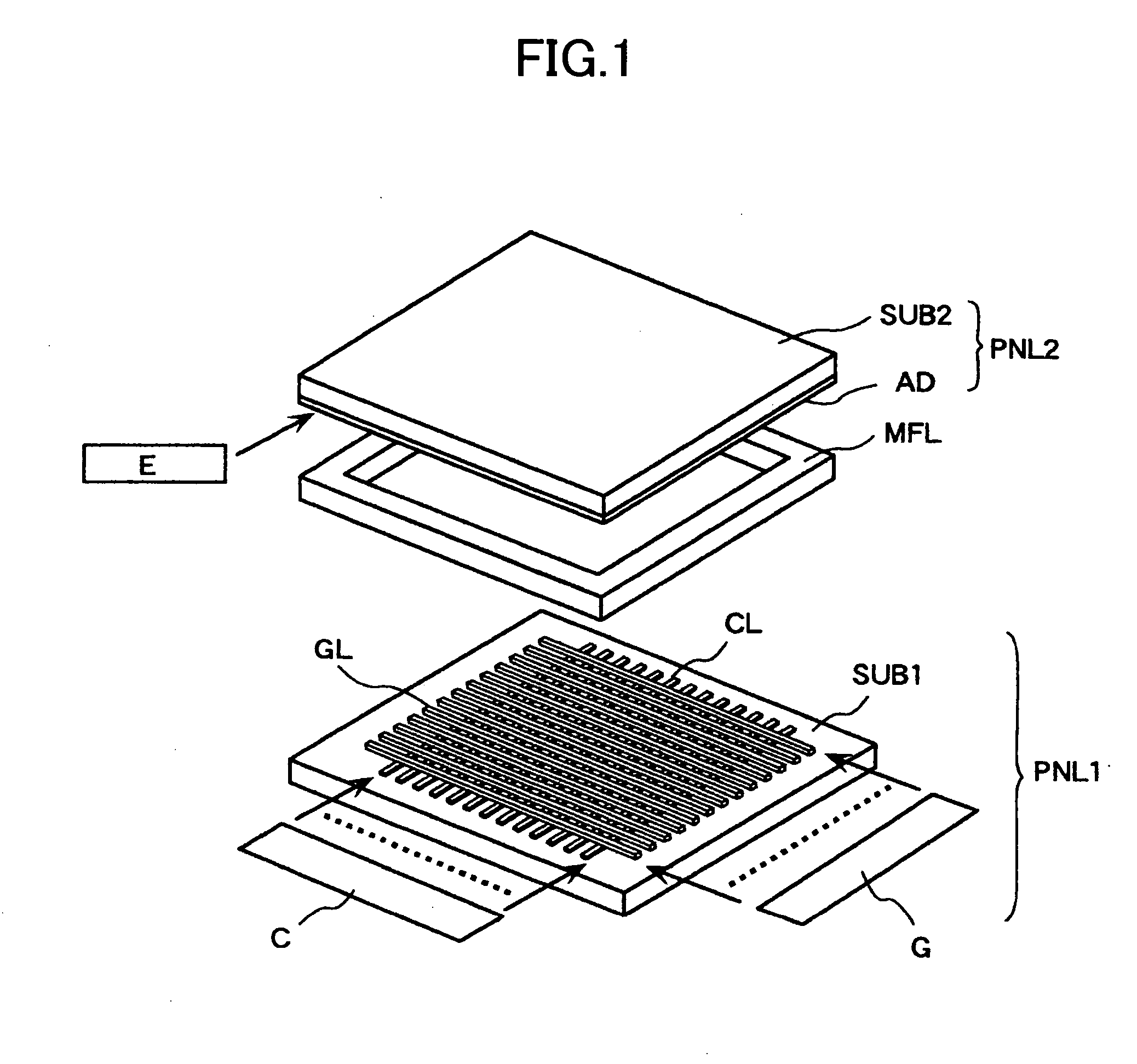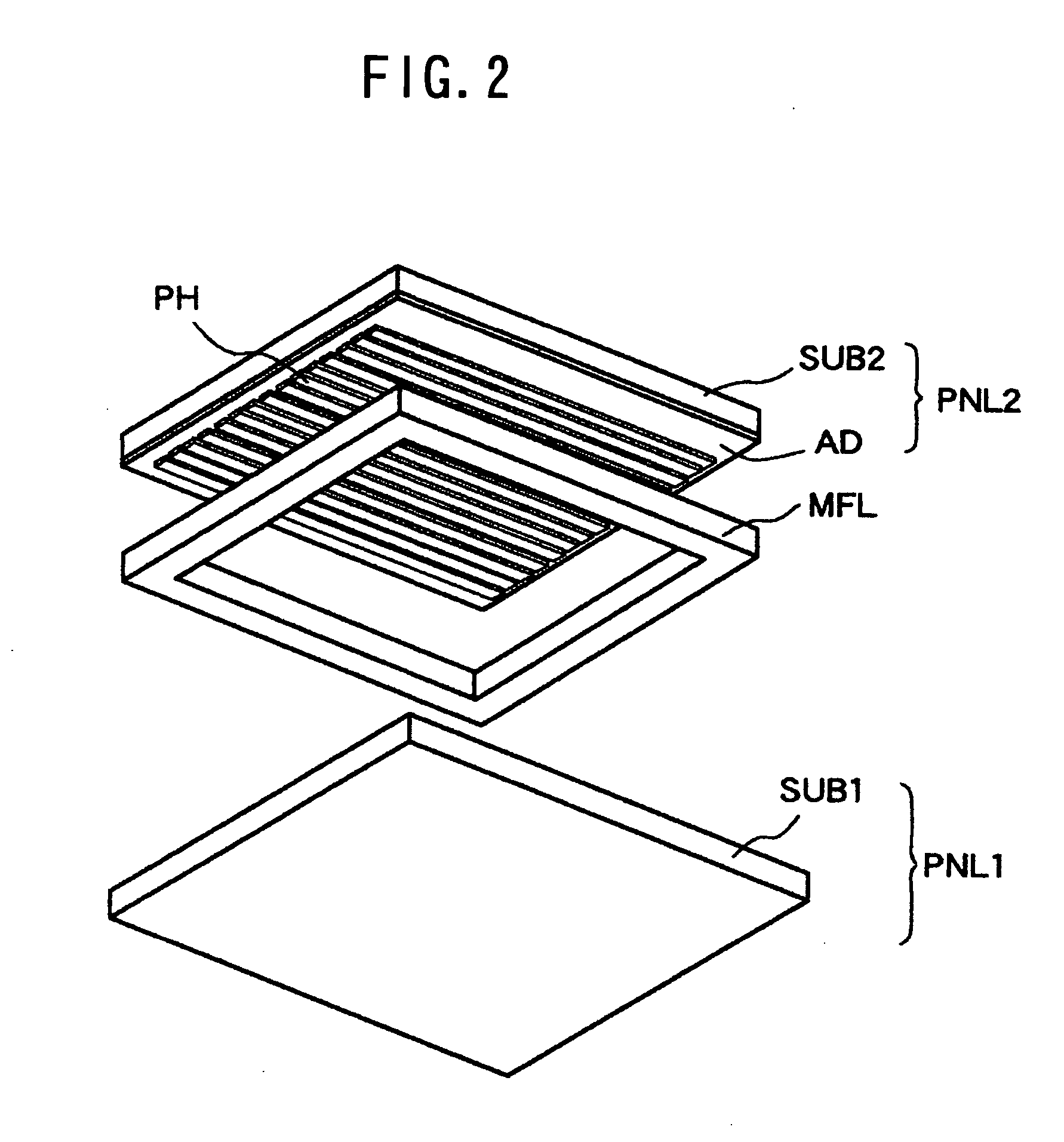Self-luminous flat-panel display
- Summary
- Abstract
- Description
- Claims
- Application Information
AI Technical Summary
Benefits of technology
Problems solved by technology
Method used
Image
Examples
first preferred embodiment
[0049]FIGS. 1 and 2 are schematic views illustrating structurally a first embodiment of a self-luminous flat-panel panel display apparatus according to the present invention, FIG. 1 being an essential section development perspective view of the self-luminous flat-panel display apparatus as viewed from an oblique upward direction, and FIG. 2 being an essential section development perspective view of the self-luminous flat-panel display apparatus as viewed from an oblique downward direction. A rear substrate SUB 1 that forms a rear panel PNL 1, and a front substrate SUB 2 that forms a front panel PNL 2 are adhesively attached to each other via a sealing frame MFL, thereby to constitute the self-luminous flat-panel display apparatus.
[0050]FIG. 3 is an essential section plan view looking at an inner surface of the rear substrate SUB 1 of the self-luminous flat-panel display apparatus from an upward direction. In FIG. 3, a large number of cathodes CL extending in one (first) direction a...
second preferred embodiment
[0070] FIGS. 11 to 14 show another structural example of a rear panel in a self-luminous flat-panel display apparatus according to the present invention, and fabrication process steps for implementing this structural example. Subpixels of an electron source array are described in detail in accordance with the figures.
[0071] First, as shown in FIG. 11, the surface of a rear substrate SUB 1 using a glass sheet as its preferred material is coated with an electrode-forming silver paste created from an organic solvent which contains silver fine particles and lead glass particles. This coating process is performed in stripe form by means of screen-printing, and after the coating process, the surface is baked to form a cathode CL and gate electrodes GL at the same time. The cathode CL and the gate electrodes GL are formed on essentially the same plane of the rear substrate SUB 1. The electrode-forming silver paste consists of silver fine particles with an average particle size of about 0....
PUM
 Login to View More
Login to View More Abstract
Description
Claims
Application Information
 Login to View More
Login to View More - R&D
- Intellectual Property
- Life Sciences
- Materials
- Tech Scout
- Unparalleled Data Quality
- Higher Quality Content
- 60% Fewer Hallucinations
Browse by: Latest US Patents, China's latest patents, Technical Efficacy Thesaurus, Application Domain, Technology Topic, Popular Technical Reports.
© 2025 PatSnap. All rights reserved.Legal|Privacy policy|Modern Slavery Act Transparency Statement|Sitemap|About US| Contact US: help@patsnap.com



